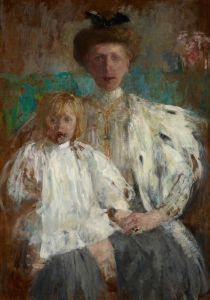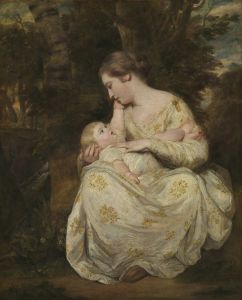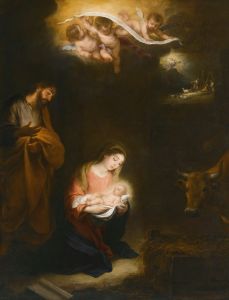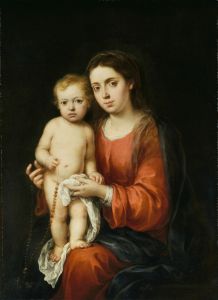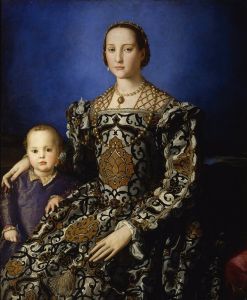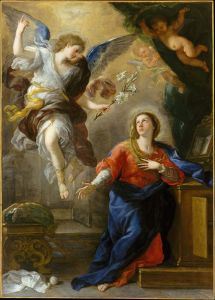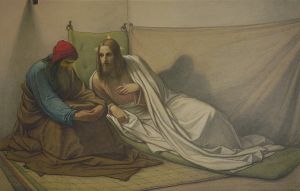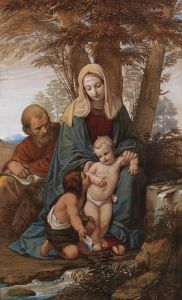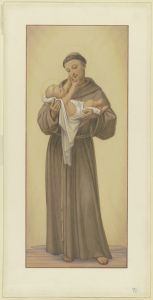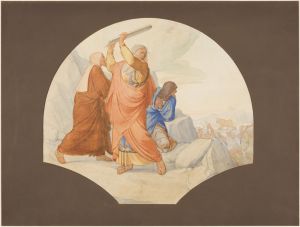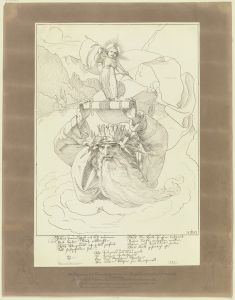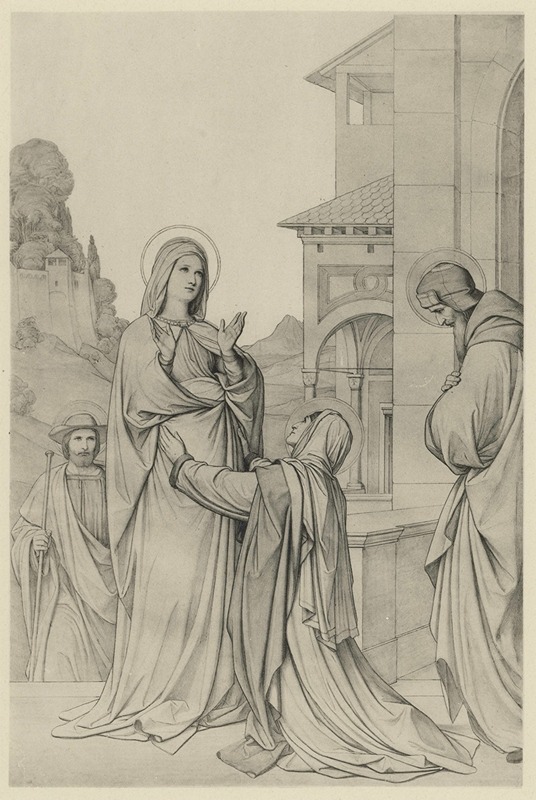
Heimsuchung Mariae
A hand-painted replica of Eduard von Steinle’s masterpiece Heimsuchung Mariae, meticulously crafted by professional artists to capture the true essence of the original. Each piece is created with museum-quality canvas and rare mineral pigments, carefully painted by experienced artists with delicate brushstrokes and rich, layered colors to perfectly recreate the texture of the original artwork. Unlike machine-printed reproductions, this hand-painted version brings the painting to life, infused with the artist’s emotions and skill in every stroke. Whether for personal collection or home decoration, it instantly elevates the artistic atmosphere of any space.
Eduard von Steinle was a notable 19th-century German painter, recognized for his contributions to the Nazarene movement, which sought to revive honesty and spirituality in Christian art. One of his works, "Heimsuchung Mariae," also known as "The Visitation of Mary," exemplifies his commitment to religious themes and his distinctive style.
The painting "Heimsuchung Mariae" depicts the biblical event of the Visitation, where the Virgin Mary visits her cousin Elizabeth. This event is significant in Christian theology as it marks the meeting of Mary, pregnant with Jesus, and Elizabeth, pregnant with John the Baptist. The narrative is celebrated for its themes of joy, prophecy, and divine intervention.
Steinle's rendition of this scene is characterized by its attention to detail and the serene, devout expressions of the figures involved. His work often reflects the influence of early Renaissance art, particularly in its use of color and composition, which is evident in "Heimsuchung Mariae." The painting likely features a harmonious blend of warm and cool tones, creating a balanced and inviting atmosphere that draws the viewer into the sacred moment being depicted.
The Nazarene movement, to which Steinle belonged, was known for its emphasis on religious and historical subjects, often drawing inspiration from medieval and early Renaissance art. This influence is apparent in Steinle's work, as he often incorporated elements such as elongated figures and a focus on narrative clarity, which can be seen in "Heimsuchung Mariae."
Steinle's artistic career was marked by his dedication to teaching and his involvement in various artistic projects, including frescoes and altarpieces for churches. His work was well-regarded during his lifetime, and he played a significant role in the revival of religious art in the 19th century. "Heimsuchung Mariae" is a testament to his skill in conveying religious themes with both reverence and artistic finesse.
While specific details about the creation date or current location of "Heimsuchung Mariae" are not readily available, Steinle's body of work remains influential in the study of 19th-century religious art. His paintings are celebrated for their spiritual depth and technical proficiency, characteristics that are likely present in "Heimsuchung Mariae."
In summary, Eduard von Steinle's "Heimsuchung Mariae" is a significant work within his oeuvre, reflecting the core principles of the Nazarene movement and his personal dedication to religious art. Through his depiction of the Visitation, Steinle captures a moment of profound theological importance with grace and precision, contributing to the rich tapestry of Christian art history.





